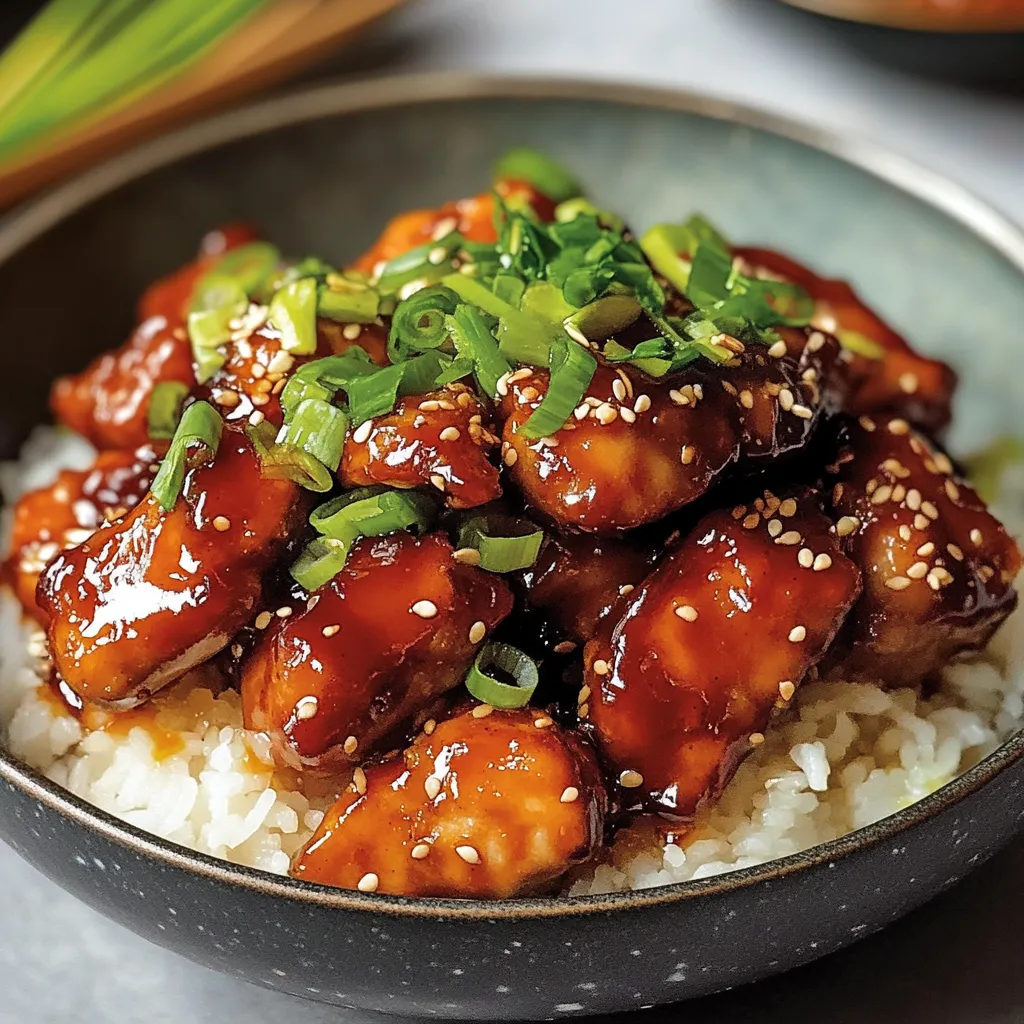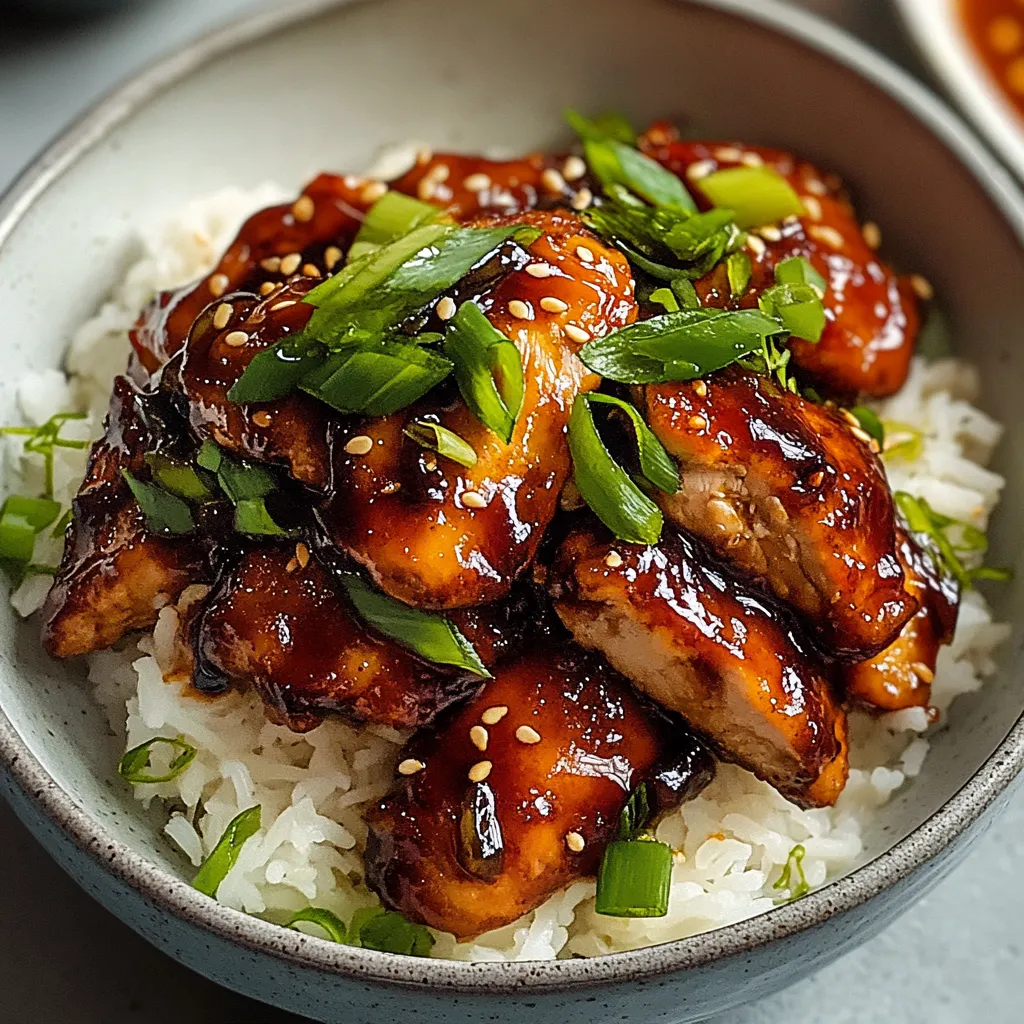 Pin it
Pin it
Vietnamese caramel ginger chicken balances sweet, savory, and spicy elements in perfect harmony through a careful caramelization process that transforms ordinary chicken into something extraordinary. This dish captures the essence of Vietnamese cooking with its complex layering of flavors—aromatic ginger and garlic provide warmth and depth, while fish sauce contributes essential umami notes that complement the sweetness of the caramel. The sauce develops a glossy, sticky consistency that coats each piece of chicken, creating a mahogany glaze that's as beautiful as it is flavorful.
I discovered this dish during a cooking workshop with a Vietnamese chef who emphasized that proper caramelization is the foundation of many traditional dishes. My first attempt at home was a revelation—the transformation of simple sugar into a deep amber base that enhanced everything it touched felt like culinary alchemy. What struck me most was how the caramel magnified the savory elements rather than making the dish overly sweet. Now whenever I make it, the aroma immediately transports me back to that first experience, and guests inevitably ask for the recipe before the meal is over.
Ingredients List
- 1 ½ pounds chicken thighs: Bone-in thighs provide the most flavor and remain juicy through cooking, though boneless thighs work well too.
- 4 tablespoons sugar: Forms the caramel base of the sauce, developing deep complexity during cooking.
- 4 tablespoons fish sauce: Provides essential umami, balancing the sweetness of the caramel.
- 2 tablespoons soy sauce: Enhances the color and umami depth of the sauce.
- 2 tablespoons ginger: Freshly grated ginger adds aromatic warmth and counterbalances the caramel’s sweetness.
- 4 cloves garlic: Minced garlic infuses the sauce with depth and fragrance.
- 1 tablespoon rice vinegar: Brightens the sauce and balances the richness of the caramel.
- 1 small onion: Thinly sliced for sweetness and body in the sauce.
- Thai bird's eye chilies (optional): Adds vibrant heat, adjusting the spice level to taste.
Cooking Method
- Prepare Chicken Properly:
- Pat chicken thighs dry with paper towels for proper browning. Season lightly with salt and pepper and let sit at room temperature for 15 minutes.
- Sear for Flavor Foundation:
- Heat vegetable oil in a skillet over medium-high heat. Sear chicken skin-side down for 4-5 minutes, then flip and cook the other side for 3-4 minutes. Transfer to a plate.
- Create Caramel Base:
- Reduce heat to medium and sprinkle sugar evenly in the pan. Let it melt and turn amber in color, swirling occasionally for even caramelization.
- Incorporate Liquid Elements:
- Carefully add fish sauce, soy sauce, and rice vinegar. The caramel will harden briefly but dissolve as you stir.
- Build Aromatic Layers:
- Stir in grated ginger, minced garlic, and sliced onion. Cook for 1-2 minutes until fragrant and softened.
- Create Sauce Volume:
- Add 1 cup of water, stirring to create a cohesive sauce. Bring to a gentle simmer.
- Return Chicken to Sauce:
- Place the seared chicken back in the skillet, spooning some sauce over each piece.
- Simmer to Perfection:
- Cover partially and simmer for 15-20 minutes, flipping once, until the sauce thickens into a glossy glaze.
- Add Heat Element:
- Stir in Thai chilies during the last 5 minutes if using, adjusting to taste.
- Check Doneness:
- Ensure chicken reaches an internal temperature of 165°F (74°C). If the sauce thickens too quickly, add a few tablespoons of water.
- Rest Briefly:
- Transfer chicken to a serving plate and let it rest for 3-5 minutes before serving.
- Garnish Thoughtfully:
- Sprinkle with fresh cilantro and thin slices of chili for a final touch of color and flavor.
 Pin it
Pin it
My first attempt at this dish nearly ended in disaster when I stepped away from the caramelizing sugar to answer a phone call. I returned to a smoking pan of blackened sugar that required starting over. That experience taught me the importance of patience and attention during the caramelization process. Now I approach it almost meditatively, watching the transformation closely and enjoying the process.
Serving Suggestions
Serve this dish with steamed jasmine rice and a cucumber salad dressed with rice vinegar for a balanced Vietnamese meal.
Pair with quick-pickled carrots and daikon radish for a refreshing contrast to the rich caramel sauce.
Transform leftovers by shredding the chicken and serving it in a bánh mì sandwich with fresh cilantro and sliced jalapeños.
Regional Variations
Create a central Vietnamese version by adding a tablespoon of lemongrass paste for a citrusy depth.
For a southern Vietnamese twist, substitute coconut water for the plain water, adding a subtle tropical sweetness.
For a northern Vietnamese approach, reduce the sugar slightly and add a star anise pod during simmering for warm spice notes.
Storage Wisdom
Store leftovers in an airtight container for up to three days, allowing flavors to deepen.
Freeze portions with extra sauce for up to two months. Thaw in the refrigerator and reheat gently.
Reheat in a skillet with a tablespoon of water to maintain moisture while warming.
 Pin it
Pin it
Vietnamese caramel ginger chicken has become a cornerstone recipe in my home cooking repertoire, one that bridges the gap between everyday meals and special occasions. There's something profoundly satisfying about watching guests experience their first bite—the moment of surprise as they taste how the caramel enhances rather than overwhelms the savory elements. Each time I make it, I appreciate anew the genius of Vietnamese cuisine's balance and depth.
Frequently Asked Questions
- → What's the best type of chicken to use for this recipe?
- Bone-in, skin-on chicken thighs are ideal as they stay juicy and flavorful during the simmering process. However, boneless thighs also work well and cook faster. Chicken breasts can be used but may need shorter cooking time to prevent drying out.
- → Can I make the caramel sauce without burning it?
- Watch the sugar carefully as it melts and caramelizes. Use a light-colored pan if possible to better see the color changing. When it reaches an amber color (like maple syrup), immediately add the liquids. If it smells bitter or looks too dark, it's best to start over.
- → Is there a substitute for fish sauce?
- While fish sauce provides authentic flavor, you can substitute with additional soy sauce plus a squeeze of lime juice. The flavor won't be identical, but will still be delicious. Worcestershire sauce mixed with a pinch of salt can also work in a pinch.
- → How spicy is this dish?
- The spice level is adjustable. Without the bird's eye chilies, the dish is not spicy at all. Add one chili for mild heat, or more for increased spiciness. You can also serve with chili sauce on the side for people to add to taste.
- → Can I make this dish ahead of time?
- Yes, this dish actually improves in flavor overnight as the chicken absorbs more of the sauce. Refrigerate in an airtight container for up to 3 days, then gently reheat on the stovetop or microwave until hot throughout.
